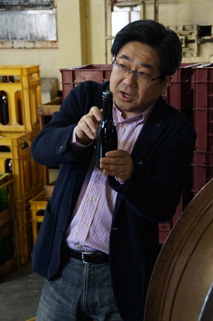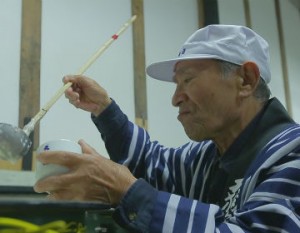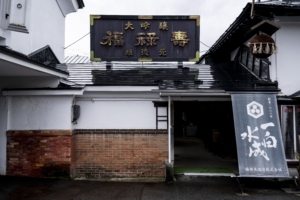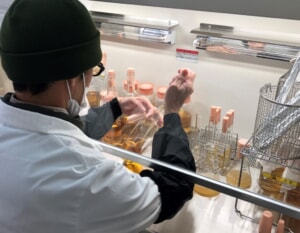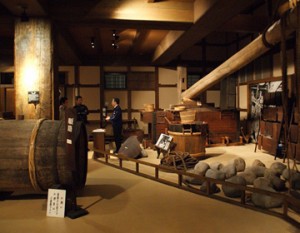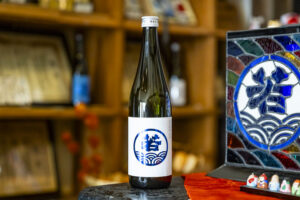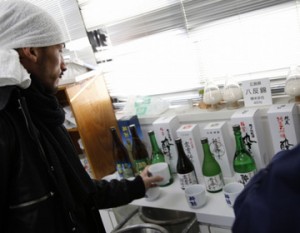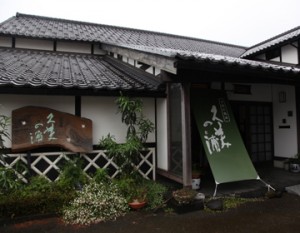So that good “sake” can accompany daily meals
You often see banners in a restaurant that say “Dewazakura” and you instantly know it’s “sake” even if you don’t know very much about “sake” in general. Perhaps it is one of the most famous regional “sake” brands. We visited the company that makes Dewazakura “sake”, Dewazakura Sake Brewery Co, Ltd. in Tendo, Yamagata. The brewery was founded in 1892. It’s an old brewery with a 120-year history. The policy of Dewazakura is to serve good sake to the standard consumer. They don’t seek the subtle difference in taste only a professional can distinguish, but aim to produce good “sake” that the general public can appreciate.
They also continue to make true local “sake” that the local brewmasters brew using pure local rice and local water.
The taste of the “sake” is characterized by the rich and complex taste that has many aspects that can be rediscovered with every sip. There are many fans of this “sake” as the standard beverage that is served with every meal.
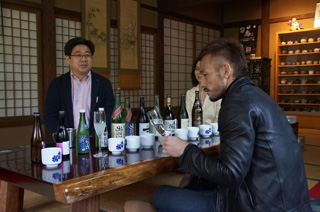
No effort spared for good “sake”
We interviewed Masumi Nakano, President. While we were looking around the brewery, he told us that “The rice in the rice refinery reflects the brewery’s stance”. He told us “70% of our cost is spent on rice.” It doesn’t just mean that the net cost of the rice is 70% of the product, it also means that the careful handling of the rice has a direct effect on the product.
Just as he stated, at Dewazakura, they care about rice. That often means using rice from some famous area or famous farm. However, what they really care about is how the rice is handled. For example, refining rice. At Dewazakura, they bought their own rice refining machine and refine rice from brown rice. This way, the brewmasters can look at the condition of the rice (i.e. hard, soft, etc.) and make a judgement right away. That information can be conveyed to the people in charge of the following processes (rice washing, soaking, steaming, etc.) immediately, and adjustments can be made on the spot. Of course, things like refining rice can be consigned to outside resources and that is often more economical, but it just means that they don’t spare any effort for good “sake”.

“Daiginjo sake” is not everything
What lies beneath their policy of “sparing no effort for brewing sake” is the trust they place on people. Of course they mechanize a lot of things, but if it’s something either machines or people are able to do, Nakano’s choice is to let people do the job.
“That allows for finer adjustments and most of all, I feel more confident about the end product. So we’d like to leave as much as possible in human hands.“ he said.
Especially important is the process of making rice malt which is a totally manual process. There is constant monitoring and adjusting while rice malt is being made. In order to pass on the skills and the ”touch”, all brewers, not just the brewmaster, get involved in the process. Even if it is the premium “daiginjo sake” for a contest, brewers other than the brew master are put in charge and take on responsibility. That will raise the level of the entire team and the pass on the skills to everyone. Every year, regardless of age, everyone is put into charge of some task of importance. That is one big matter they are particular about.
However, as stated in the beginning, what Dewazakura aims for is “taste everyone can recognize as good”, and the “quality of the everyday “sake””. So they don’t think that it’s enough for the “daiginjo sake” to be good. Of course, “daiginjo” is the premium “sake” and needs to be good, but it takes time and work and money to brew. It is no good if only the “daiginjo” is good Nakano explained. “First there is the regular brew, and the “daiginjo” on top of that. That’s how I think about it. So in order to make premium “sake” you have to raise the level of the daily ”sake” on the table.” Nakano told us. That’s what the extra work is all about.
